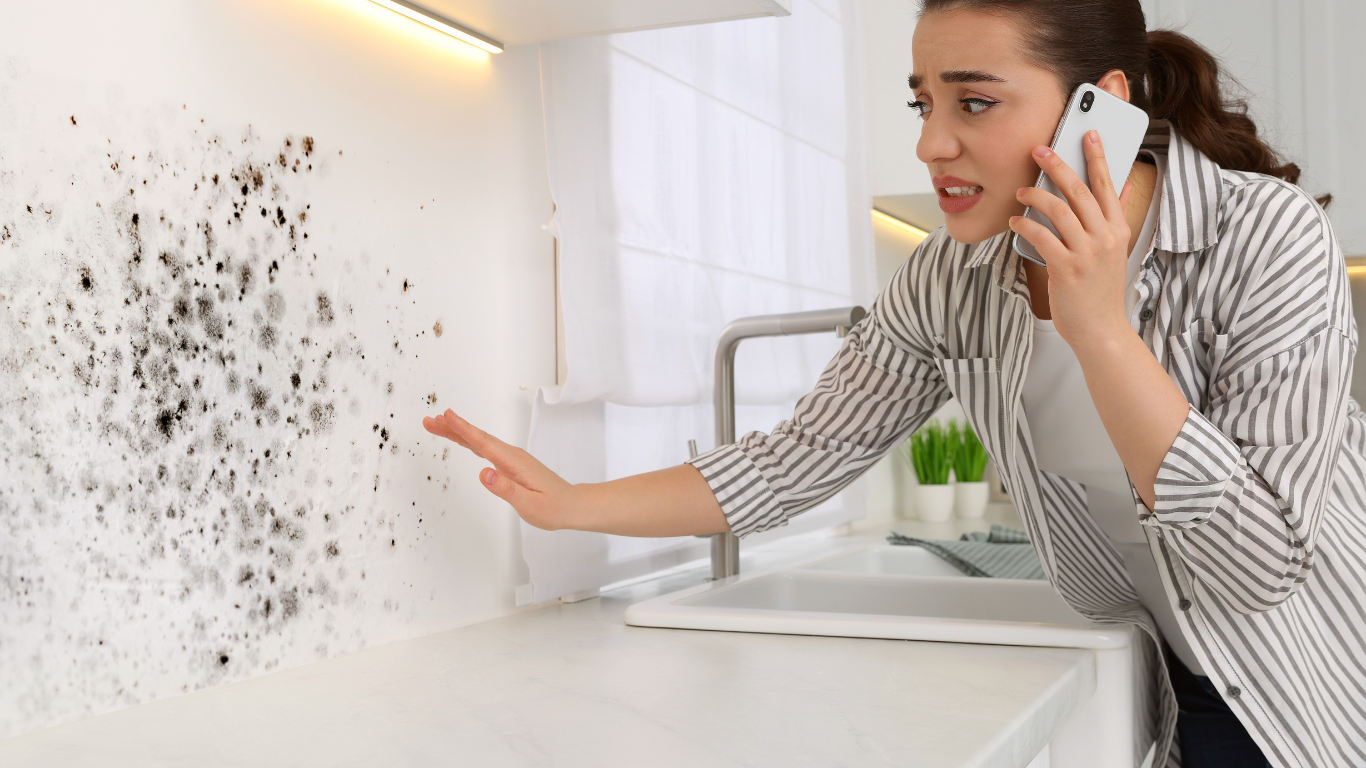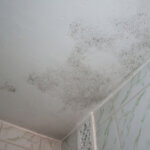Calling for mold cleaning services is the last thing you want to do for your home. But when moisture and humidity create the perfect breeding ground, mold can spread like wildfire. And it’s not just an eyesore – exposure to mold damage can lead to serious health issues for you and your loved ones. Ready to fight some fungus among us? Here’s a quick guide on choosing from mold cleaning services.
Table Of Contents:
- What is Mold and Why is it a Problem?
- Indications You May Have a Mold Problem
- Mold Remediation Process
- Choosing a Mold Cleaning Services Company
- Fending Off Mold Germination in Your Home
- Conclusion
What is Mold and Why is it a Problem?
A mold is a fungus that gets ahead in humid and dimly-lit environments. It discharges nanoscopic spores into the atmosphere that can plump oneself on surfaces and propagate. Once it takes hold, it can spread quickly.
Types of Mold Commonly Found in Homes
- Aspergillus – This mold comes in various colors, from green to gray to black and found often in foods and in air conditioning systems.
- Penicillium – You might recognize this one from its famous antibiotic relative but when it shows up in your home, it can cause allergic reactions and other health problems.
- Stachybotrys – Also known as “black mold,” this is the stuff of nightmares and it prospers on highly cellulose materials, like drywall and wood, and can give rise to life-and-death respiratory issues.
Health Threats Corresponding to Mold Exposure
- Respiratory difficulties like coughing, wheezing, and difficulty breathing.
- Skin itching and red spots.
- Migraines and exhaustion.
According to the Centers for Disease Control and Prevention (CDC), mold exposure can be particularly dangerous for people with asthma, as it can trigger attacks and make symptoms worse.
How Mold Fans Out and Sprouts
Mold is like the unwanted houseguest that just won’t leave. Mold spores are tiny and can easily become airborne, allowing them to travel throughout your home and settle on new surfaces and they can even hitch a ride on your clothing or pets, spreading from room to room without you even realizing it. Once mold finds a suitable spot to call home, it can grow on just about anything – wood, paper, carpet, insulation, you name it.
Indications You May Have a Mold Problem
Mold is sneaky. It can hide in plain sight, lurking behind walls or under carpets, slowly growing and spreading without you even realizing it. But there are some telltale signs that can alert you to a potential mold problem in your home.
Musty Odors
One of the first things you might notice is a musty, earthy smell. This is caused by microbial volatile organic compounds (MVOCs) that are released by mold during its growth cycle. According to the Environmental Protection Agency (EPA), MVOCs can cause headaches, nausea, and eye and throat irritation in some people.
Visible Mold Growth
Of course, the most obvious sign of a mold problem is visible growth. Mold can appear as black, green, gray, or white patches on surfaces like walls, ceilings, or furniture. Mold can spread quickly, so the sooner you address the issue, the better and remember – just because you can’t see it doesn’t mean it’s not there.
Health Malady
If you or your family members are experiencing unexplained symptoms like coughing, sneezing, itchy eyes, or skin rashes, it might be time to consider mold as a possible cause. According to the CDC, people with asthma or other respiratory conditions are particularly susceptible to the effects of mold. If your symptoms seem to get worse when you’re at home and improve when you leave, that’s a red flag that something in your environment might be to blame.
Water Damage or Leaks
Mold loves moisture, so any signs of water damage or leaks in your home should be taken seriously. Look for water stains on walls or ceilings, bubbling or peeling paint, or warping and discoloration of floors or walls. If you’ve recently had a flood or a major leak, it’s especially important to keep an eye out for mold growth in the affected areas.
Mold Remediation Process
Mold Investigation and Putting to Test
Before any remediation work can begin, it’s important to assess the extent of the mold issue. This typically involves a thorough visual mold inspection of the affected areas, as well as testing to determine the type and concentration of mold present. According to the EPA, testing is not always necessary, but it can be helpful in some situations – for example, if you have health concerns or if you need to identify the source of a mold problem, a professional mold inspector can help you determine whether testing is needed in your case.
Confinement and Seclusion
Once the scope of the problem has been determined, the next step is to contain the mold and prevent it from spreading further. This typically involves sealing off the affected area with plastic sheeting and using negative air pressure to keep mold spores from escaping. To minimize the risk of cross-contamination, workers will wear protective gear such as gloves, goggles, and respirators to create a barrier between the moldy area and the rest of the home.
Rubbing Out and Getting Rid
With the area properly contained, the mold-contaminated materials can be safely removed and disposed of. According to the CDC, porous materials like carpet, drywall, or ceiling tiles may need to be thrown away if they are heavily contaminated with mold. Non-porous materials like glass, plastic, or metal can often be cleaned and reused.
Cleaning and Disinfection
Once the contaminated materials have been removed, the remaining surfaces must be thoroughly cleaned and disinfected to eliminate any remaining mold spores. This is typically done with specialized cleaning solutions and equipment like HEPA vacuums and air scrubbers. This may involve multiple rounds of mold cleanup and disinfection to ensure that the area is completely free of mold spores.
Rehabilitation and Fix
After the remediation process, the area will require the replacement of materials and restoration to its original condition, which may include cosmetic repairs such as new drywall, flooring, insulation, or painting. According to the EPA, it’s important to address the underlying moisture problem that led to mold growth in the first place.
Choosing a Mold Cleaning Services Company
Record and Aptitude
First and foremost, you want a remediation company that has plenty of experience dealing with mold. Ask how long they’ve been in business and what kind of training their technicians have because a reputable company should be able to provide references and examples of past projects.
According to the Institute of Inspection, Cleaning and Restoration Certification (IICRC), a professional mold remediation company should have certified technicians who have completed specialized training in mold removal and remediation.
Authentication and Warrant
Look for a company that is certified by professional organizations like the IICRC or the National Organization of Remediators and Mold Inspectors (NORMI).
They should also have any required state or local licenses to perform mold remediation work in your area. Don’t be afraid to ask for proof of these certifications and licenses before hiring a company.
Insurance Participation
Mold remediation can be a costly process, so you want to make sure the company you hire has proper insurance coverage. This should include both liability insurance and workers’ compensation insurance to protect you in case of any accidents or damage during the remediation process. According to the Environmental Protection Agency (EPA), it’s important to ask for proof of insurance before hiring a mold remediation company.
Appraisals and Commentaries
To assess a mold remediation company, look over their references and reviews. Contact past clients for their experience with the company and whether they recommend it to others.
Fending Off Mold Germination in Your Home
Control Moisture and Humidity
Mold loves damp, humid environments, so it’s cardinal to keep indoor humidity levels below 60%. You can do this by using a dehumidifier or air conditioner and making sure to use exhaust fans in bathrooms and kitchens to remove excess moisture. According to the EPA, you should also avoid letting water sit on surfaces like floors or countertops, and fix any leaks or water damage promptly to prevent mold growth.
Fix Leaks and Water Damage Promptly
Regularly inspect your home for signs of leaks or moisture problems, especially in areas like the basement, attic, or around windows and doors. If you do find a leak or water damage, have it repaired promptly by a professional. The longer you wait, the more likely it is that mold will start to grow.
Improve Ventilation
Use exhaust fans or open windows when showering, cooking, or doing laundry to remove excess moisture from the air.
Consider installing a whole-house ventilation system for better air circulation. According to the Department of Energy, a whole-house ventilation system can help lessen moisture buildup and refine indoor air quality.
Disciplined Cleaning and Upkeep
Clean and disinfect surfaces like bathroom tiles, shower curtains, and kitchen counters regularly using a mold-inhibiting cleaner. And don’t forget to clean and maintain your HVAC system regularly to prevent mold growth in your air ducts.
Conclusion
Mold is a formidable foe, but you can take back your home with the right mold cleaning services on your side. Don’t let mold take over your living space – take action today and breathe easier tomorrow. So why wait? Reclaim your space and breathe easy knowing your home is a safe and comfortable place to be.





